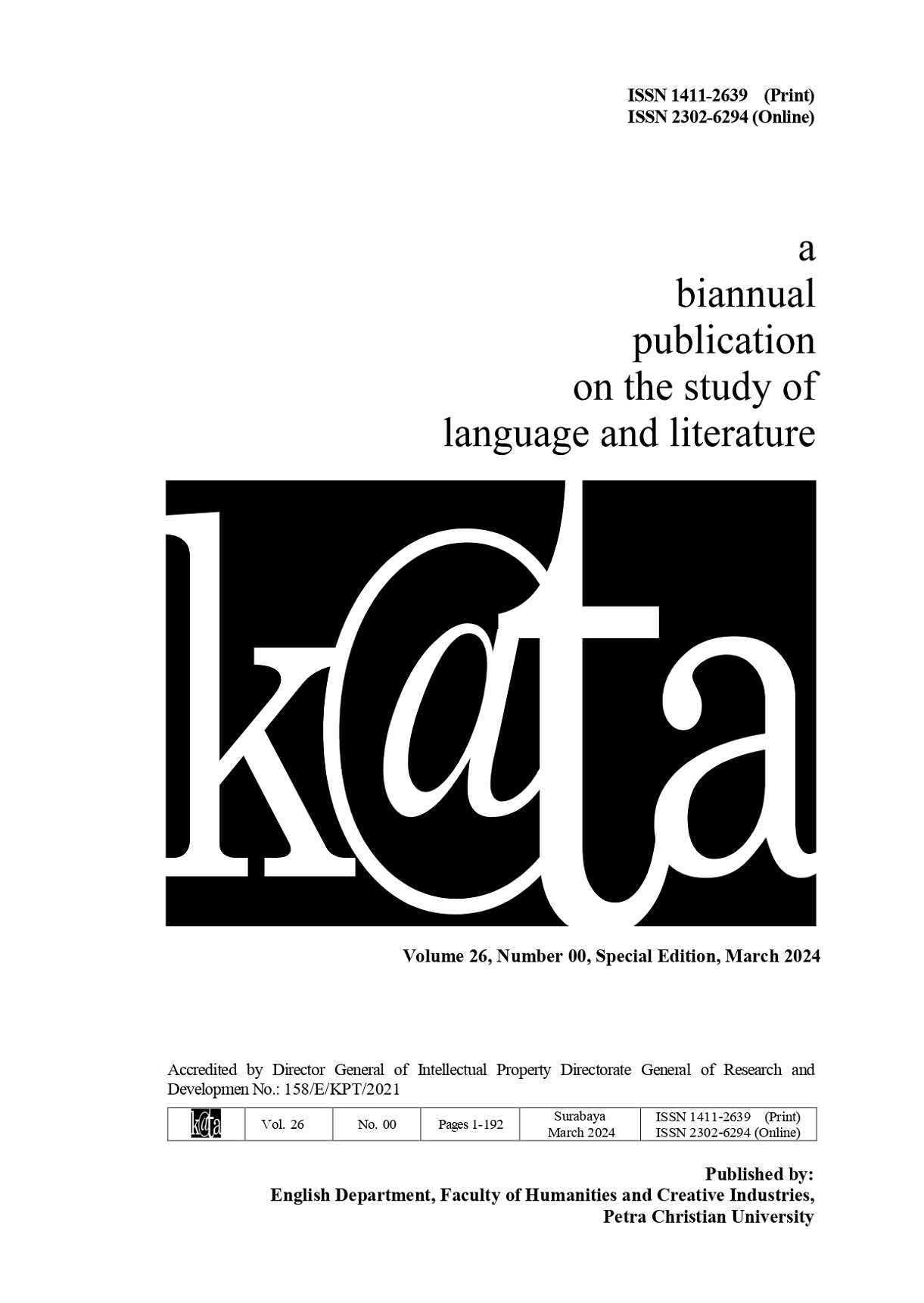The Structures of Political, Economic, and Socio-cultural Rhetorical Narratives on Social Media
DOI:
https://doi.org/10.9744/kata.26.00.131-142Keywords:
Narrative, political, economic, Socio-Cultural Narrative, Rhetorical Narrative, Social Media NarrativeAbstract
This research was conducted on the ground of the reason for the increasingly widespread use of narratives on various social media platforms. Narrative is an event whereby someone represents an event aiming to influence the understanding, emotions and values of others. This study qualitatively aims to capture the most common elements of narrative structure focusing on political, economic, and socio-cultural rhetorical narratives data originated from social media platforms. The theoretical model of narrative structure consisting of Abstract, Orientation, Complicating Actions, Resolution, Evaluation and Coda, as proposed by Labov and Waletzky was used to analyze the narrative data collected during the first four months of 2022. On the ground of social situated meanings, the findings show that the most common model of narrative structure is fully used whenever greater details of events, facts, or information are needed to be emphasized. For such reasons, all the elements of narrative structure are held to be obligatory. The findings show that some elements of narrative structure are left out and held to be optional as such elements are not considered necessary to convey the main content. In addition, the findings also show that some particular element allows it to be further developed with more embedded events, facts, opinion, or information.
Downloads
References
Dornyei, Z. (2011). Research methods in applied linguistics. Oxford UP.
Gee, J.P. (2005). An introduction to discourse analysis: Theory and method. Routledge.
Halliday, M.A.K. & Hasan, R. (1985). Language, context, and text: Aspects of Language in a social-semiotic perspective. Deakin UP.
Hagstrom, L., & Gustafsson, K. (2019). Narrative power: How storytelling shapes East Asian international politics. Cambridge Review of Inter¬national Affairs, 32(4), 387–406, https://doi.org/10.1080/09557571.2019.1623498
Hazel, P. (2008). Narrative: An introduction. Micro¬soft Word - Narrative_Essay.rtf (paulhazel.com)
Labov, W., & Waletzky, J. (1997). Narrative analysis: Oral version of personal experience. Journal of Narrative and Life History, 7(1-4), 3-38.
Lavrakas, P. J. (2008). Encyclopedia of survey rese¬arch methods (Vols. 1-0). Sage Publications, Inc.
doi:10.4135/9781412963947
Lund, N.F., Cohen, S.A., & Scarles, C. (2018). The power of social media storytelling in destination branding. Journal of Destination Marketing and Management, 8, 271-280.
Phelan, J. (2007). Rhetoric/ethics. In D. Herman (Ed.), The Cambridge Companion to Narrative, pp. 203-216. Cambridge University Press.
Pertiwi, W.K. (2020). Penetrasi internet di Indonesia capai 64 persen [Indonesian internet reaches 64 percent]. Retrieved from Kompas. https://tekno.kompas.com/read/2020/02/20/14090017/penetrasi-internet-di-indonesia-capai-64-persen.
Simpson, P. (2005). Stylistics. Retrieved from Routledge. http://www.rout¬¬ledge.com/textbooks/0415281059
Downloads
Published
How to Cite
Issue
Section
License
![]() This work is licensed under a Creative Commons Attribution License
This work is licensed under a Creative Commons Attribution License



.png)
.png)

















